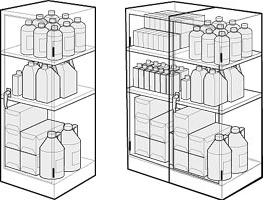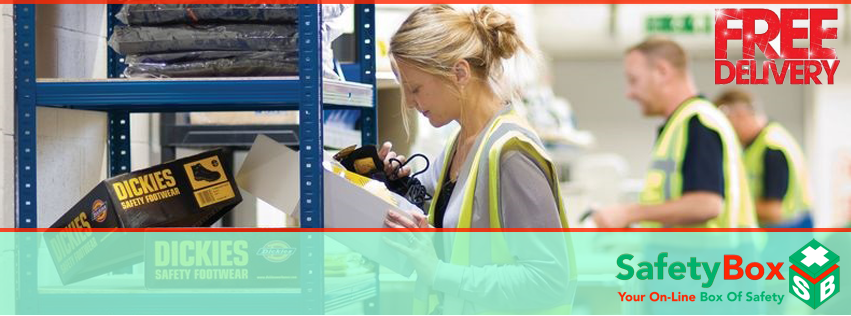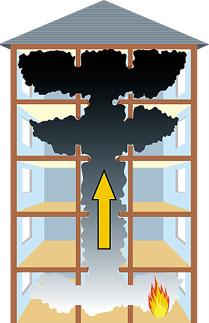It is essential that the start of any fire is detected as quickly as possible and certainly before it can make the means of escape unusable. In some circumstances, particularly where people are located away from the origin of the fire and there is a reasonable possibility that it could spread, this could mean that the fire may need to be detected within two minutes of it starting.
This is so that people have enough time to escape safely. Where quantities of highly flammable liquids or gases are involved, it may be necessary to detect any fire in seconds rather than minutes. Once a fire has been detected, the people in your workplace should be signalled to evacuate the building.
You need to give particular attention to:- any areas, particularly unoccupied ones, where there could be a delay in detecting the start of a fire;
- any areas where the warning may go unnoticed; and
- people who may be unable to react quickly.
The following paragraphs indicate some possible actions for reducing fire hazards and will provide some useful guidance to help you assess the adequacy of your own fire precautions. But remember that the fire risk assessment is an ongoing process and is a means and not an end.
If your assessment shows that you need to do more to control risk, then you should do it.
Reducing sources of ignitionYou can reduce the hazards caused by potential sources of heat by:
- removing unnecessary sources of heat from the workplace or replacing them with safer alternatives, ensuring that heat-producing equipment is used in accordance with the manufacturer's instructions and is properly maintained;
- installing machinery and equipment which has been designed to minimise the risk of fire and explosions;
- replacing naked flame and radiant heaters with fixed convector heaters or a central heating system;
- ensuring that all electrical fuses and circuit breakers etc are of the correct rating and suitable for the purpose;
- ensuring that sources of heat do not arise from faulty or overloaded electrical or mechanical equipment (such as overheating bearings);
- keeping ducts and flues clean;
- where appropriate, operating a permit to work system for maintenance workers and contractors who carry out 'hot work' involving processes such as welding or flame cutting;
- operating a safe smoking policy in designated smoking areas and prohibiting smoking elsewhere;
- enforcing the prohibition of matches and lighters and other naked flames in high- fire-risk areas;
- ensuring that all equipment that could provide a source of ignition, even when not in use, is left in a safe condition;
- making sure that any smoldering material (including smokers' material) is properly extinguished before leaving the workplace; and
- taking precautions to avoid the risk of arson.
Further information about reducing sources of ignition is given in Part 3 (see 'Reducing fire risks through good management'). Minimising the potential fuel for a fire
Minimising the potential fuel for a fire

There are various ways you can reduce the risks caused by materials and substances which burn.
These include:
- removing flammable materials and substances, or reducing them to the minimum required for the operation of the business;
- replacing materials and substances with less flammable alternatives;
- ensuring flammable materials, liquids (and vapours) and gases are handled, transported, stored and used properly;
- ensuring adequate separation distances between flammable materials;
- storing highly flammable substances in fire-resisting stores and, where necessary, keeping a minimum quantity in fire-resisting cabinets in the workroom;
- removing, covering or treating large areas of flammable wall and ceiling linings to reduce the rate of flame spread across the surface;
- replacing or repairing furniture with damaged upholstery where the foam filling is exposed;
- ensuring that flammable waste materials and rubbish are not allowed to build up and are carefully stored until properly disposed of;
- taking action to avoid storage areas being vulnerable to arson or vandalism;
- ensuring good housekeeping; and
- improving the fire-resistance of the construction of the workplace.


 . To be able to assess whether people will be at risk in the event of a fire it helps to have an appreciation of the risks posed as it develops. Most people will be familiar with a fire outdoors, such as a bonfire, which people can move back from as it grows.
. To be able to assess whether people will be at risk in the event of a fire it helps to have an appreciation of the risks posed as it develops. Most people will be familiar with a fire outdoors, such as a bonfire, which people can move back from as it grows.